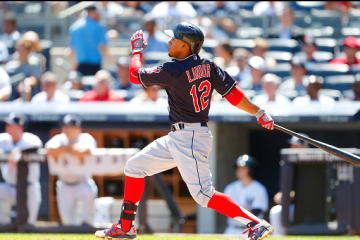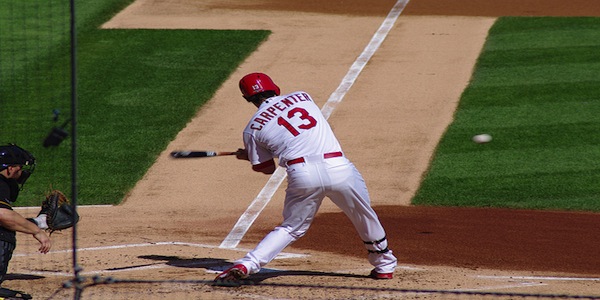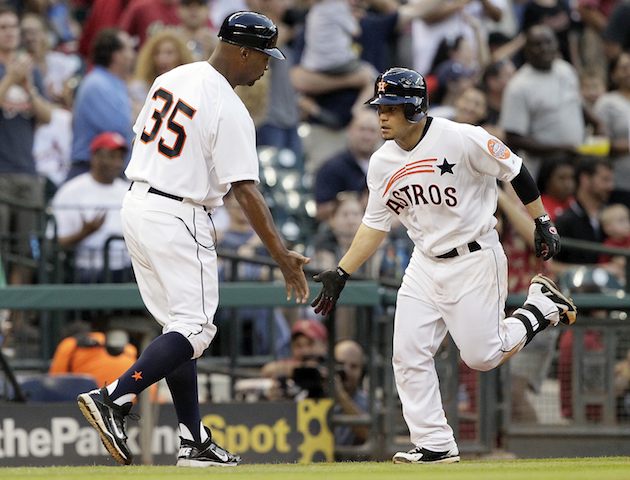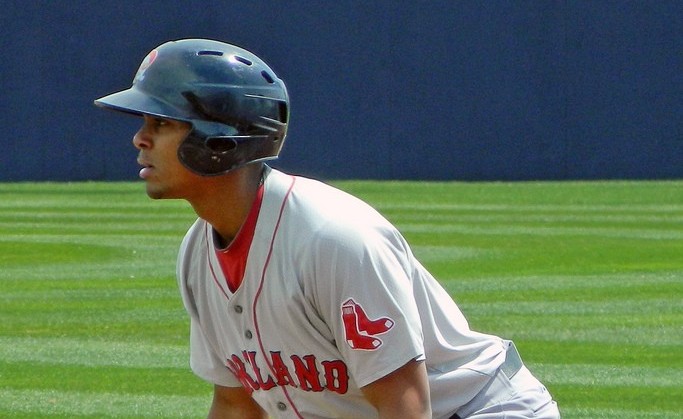2016 Fantasy Baseball: Plate Discipline — Shortstops

For those that watch baseball religiously, a lot has been made of the so-called five tools that scouts look to when evaluating players. While fielding and throwing are important, they typically don’t matter to fantasy players. Most fantasy players focus on the other three tools: hitting, hitting for power, and speed. That translates into hitting for average, hitting for power, and stealing bases.
More and more leagues are including an on base element. That could be walks or on base percentage. Even leagues that continue to use the standard five categories can take advantage of what some lovingly call the sixth tool (or fourth fantasy tool): plate discipline. As scouts and baseball executives are becoming increasingly aware, players are born with plate discipline or are not.
Essentially, the difference between the hit tool and the plate discipline tool is that with the plate discipline tool you are able to recognize which pitches you should swing at. When looking at the data, the key statistic (as found at Fangraphs) is Oswing. That is the percentage of pitches outside the strike zone that a hitter swings at. Talented hitters can make contact on those pitches, but usually it is the kind of contact pitchers want.
Plate discipline is only one of the four tools that fantasy players look for, so you shouldn’t govern your entire draft based on plate discipline, but it does allow us to find the occasional sleeper and avoid the occasional rotter. In this series, we will identify a couple of sleepers and a couple of players who could end up being busts. Looking at all of the data helps us see why guys strikeout a lot or walk a lot. When we do that, it helps explain why some us end up liking certain guys and not liking others. Often we get criticized for that and we don’t have the words to articulate our feelings. Some of these numbers give us that articulation.
Sleepers
| SO% | BB% | Oswing | Zcontact | Contact | BABIP | |
| 2015 | 28.5 | 8.0 | 31.4 | 82.3 | 71.4 | .324 |
2015 was the year of the shortstop. We saw Carlos Correa, Francisco Lindor, and Corey Seager all make their debuts. Russell got lost in the shuffle and fantasy owners may sleep on him, too. Admittedly, he didn’t look as good as those other rookies, but there is a lot to like about Russell, and fantasy owners might lose out on a very refreshing option if they let him go too long in the draft.
Russell’s minor league numbers show a guy that consistently walked at least ten percent of the time at each spot. His 31.4 oswing rate is slightly worse than the league average, but it certainly isn’t high enough to justify the ridiculously high strikeout rate he had a year ago. Most projection systems have him gaining ten to twenty points in average along with 15 home runs (on average) and around ten steals. That’s starting shortstop material.
| SO% | BB% | Oswing | Zcontact | Contact | BABIP | |
| 2013 | 31.0 | 1.4 | 42.1 | 80.6 | 64.2 | .348 |
| 2014 | 27.5 | 8.2 | 27.7 | 86.2 | 78.3 | .310 |
| 2015 | 22.0 | 7.0 | 26.0 | 88.0 | 79.4 | .312 |
2013 shouldn’t really count since he had only 71 plate appearances. When you look at the last two seasons you are looking at a player that has improved each season. Most of that improvement is coming on the hit tool side. His Oswing rate improved some, but it was better than average both seasons. In short, we are looking at a player that should continue to improve this season. We are already talking about a player that hit 15 home runs and stole 11 bases last season.
One theory about Semien’s relative level (18th at ESPN, 19th at Yahoo) is that fans are allowing the fielding to cloud their opinions. Semien led the league in errors last season, but even that doesn’t tell the whole story. Advanced fielding metrics pegged him around average. Most projection systems have him improving slightly in batting average, walk rates, and strikeout rates. Someone that gets double digit home runs and steals shouldn’t go undrafted.
Rotters
| SO% | BB% | Oswing | Zcontact | Contact | BABIP | |
| 2013 | 22.1 | 6.6 | 35.6 | 83.5 | 75.3 | .336 |
| 2014 | 28.2 | 7.1 | 34.6 | 83.4 | 72.1 | .326 |
| 2015 | 29.2 | 7.0 | 35.2 | 84.0 | 73.3 | .307 |
Desmond combines two traits that point towards disaster. First, he doesn’t exactly have a tremendous hit tool. Even on balls that are in the zone, he doesn’t make as much contact as most other guys. Add that to the fact that he swings at too many balls outside of the zone and you are looking at an impending disaster. Of course, that might have already happened last season.
Some people will buy into the idea of a bounceback season for Desmond. After all, he will be playing in the best hitter’s park in the American League. The Rangers are a contending team with a good offensive attack. You can see the wheels spinning. The problem is that the other rates are getting worse.
| SO% | BB% | Oswing | Zcontact | Contact | BABIP | |
| 2013 | 13.5 | 4.0 | 34.5 | 91.4 | 85.6 | .326 |
| 2014 | 12.6 | 5.0 | 36.8 | 92.5 | 86.2 | .275 |
| 2015 | 15.9 | 2.2 | 39.5 | 91.5 | 84.5 | .298 |
Granted, Segura is no longer a frontline fantasy option in any platform, but the occasional player may buy into the change of scenery gamut. Unfortunately, players don’t change who they are in terms of plate discipline very often. Segura is one of those players and he’s changing for the worse. His Oswing rate has gone from bad to worse and it probably won’t end up getting better. His walk rate has become ridiculously low. Like Billy Hamilton, he is becoming valuable only for his steals. Unlike Billy Hamilton, he isn’t an elite base stealer.





